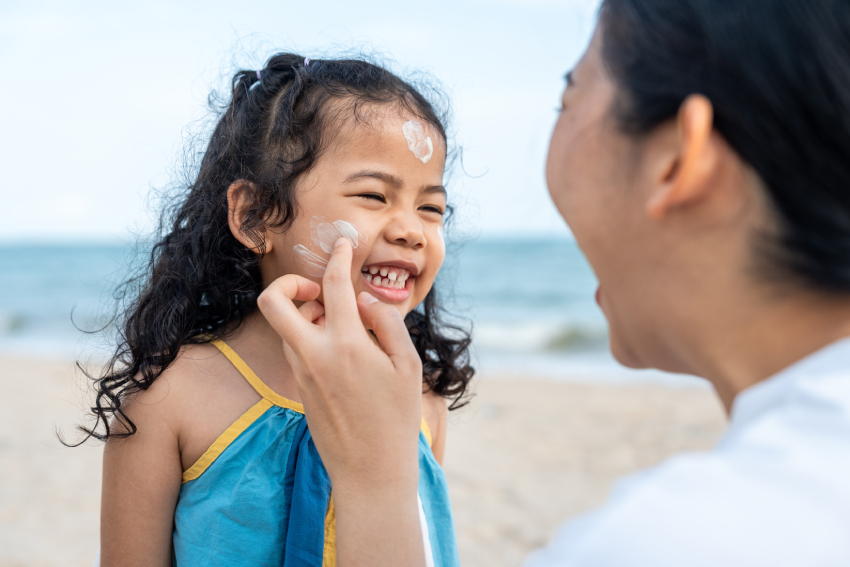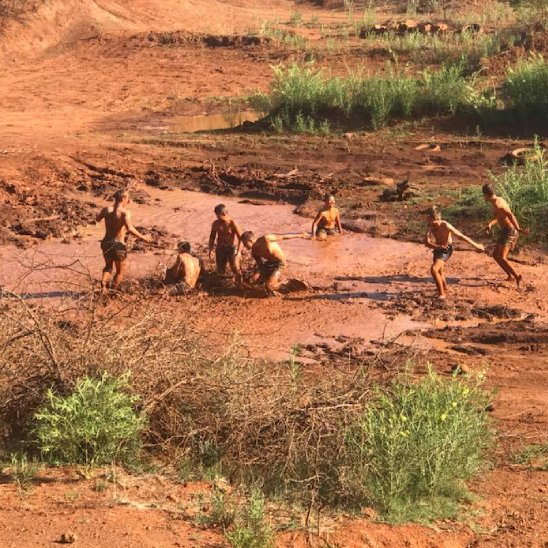Winter Sun Protection: Stay Safe from Sunburn Year-Round
Understanding winter sun protection challenges most people's assumptions about when sunscreen matters, mainly because the sun safety industry has trained everyone to associate UV danger exclusively with beach weather and summer holidays. Here's the uncomfortable truth that dermatologists know but most people ignore: winter sun can be more dangerous than summer sun in certain conditions, yet most people abandon sun protection entirely when temperatures drop below t-shirt weather. Whether you're enjoying outdoor activities around Mbizi Game Lodge & Spa during Limpopo's mild winter months or planning year-round bushveld adventures, recognising winter sun risks will protect your skin and prevent the embarrassing situation of explaining to people how you got sunburned in July.
Can You Get Sunburn in Winter?
Winter sunburn happens more frequently than most people realise, often catching victims completely off guard because they've been conditioned to think cold weather equals sun safety. The combination of deceptive cool temperatures and intense UV radiation creates perfect conditions for unexpected skin damage that leaves people looking like lobsters who forgot they weren't at the beach.
Altitude increases UV exposure significantly regardless of season, though most people only think about this when they're skiing in the Alps rather than camping in elevated areas. Every 300 metres of elevation increases UV radiation by approximately 4%. The Limpopo region's elevation, combined with clear winter skies, creates surprisingly intense UV conditions that catch visitors off guard.
Reflection amplifies UV exposure in ways that aren't immediately obvious to people who think UV only comes from directly overhead. Light-coloured surfaces like concrete, sand, or dry grass reflect UV radiation upward, effectively doubling exposure from below. Water surfaces reflect up to 15% of UV radiation, while fresh snow reflects up to 80%—though snow isn't typically a concern in the Limpopo bushveld.
Cloud cover also provides less protection than most people assume, leading to false confidence on overcast days that feel safe but aren't. Up to 80% of UV radiation penetrates light cloud cover, which makes the day feel cool and comfortable. Broken cloud cover can increase UV exposure through reflection and scattering effects that concentrate radiation.
What Makes Winter Sunlight Different to Summer?
Solar angle affects UV intensity but not in the intuitive way most people expect. While the sun sits lower in the sky during winter, reducing direct overhead exposure, the angle can increase exposure to facial areas and other body parts that receive less direct sun during summer months when you're more likely to be wearing hats and seeking shade.
Atmospheric filtering changes with seasonal weather patterns in ways that can increase rather than decrease UV exposure. Clear, dry winter air provides less natural UV filtering than humid summer conditions. The crisp, clear days that make winter outdoor activities so appealing often coincide with higher UV transmission through the atmosphere.
Ozone layer thickness varies seasonally, affecting UV protection from natural atmospheric filtering that most people don't even know exists. Ozone depletion tends to be more pronounced during certain winter months, particularly in the Southern Hemisphere, reducing natural protection against harmful UV radiation when people are least prepared for it.
Duration of exposure often increases during winter months when comfortable temperatures encourage extended outdoor activities without the heat-driven breaks that naturally limit summer sun exposure. People may spend entire days hiking, camping, or participating in outdoor sports without seeking shade or taking sun protection breaks.
Wavelength composition of winter sunlight includes higher proportions of UV-A radiation, which penetrates deeper into skin and contributes to long-term damage and premature ageing. UV-A radiation remains relatively constant throughout the year, unlike UV-B radiation, which varies more dramatically with seasons, meaning winter sun exposure still causes cumulative damage.
Being Safe in The Sun
Timing outdoor activities reduces UV exposure without eliminating outdoor enjoyment, though most people ignore this advice when the weather feels perfect for extended outdoor time. Even during winter, UV radiation peaks between 10 AM and 4 PM. Plan intensive outdoor activities for early morning or late afternoon when possible, though the bushveld around Mbizi offers excellent opportunities for dawn and dusk activities when UV exposure is naturally lower.
Clothing provides the most effective sun protection when chosen appropriately, but most people prioritise fashion or temperature comfort over UV protection. Dark, tightly woven fabrics offer better protection than light, loose weaves. Long sleeves and pants protect more skin than shorts and t-shirts, but fabric choice matters more than coverage area since some lightweight fabrics provide minimal protection despite full coverage.
Shade seeking requires active planning rather than passive hoping, especially during winter when natural shade-seeking behaviour decreases. Natural shade from trees provides excellent protection, but shade quality varies throughout the day as sun angles change. Artificial shade from umbrellas, tents, or structures offers more consistent protection but requires planning and equipment.
Eye protection prevents both immediate discomfort and long-term damage that most people don't associate with winter outdoor activities. Quality sunglasses block both UV-A and UV-B radiation regardless of season. Wraparound styles provide better protection than small lenses that allow UV radiation to reach eyes from the sides. Polarised lenses reduce glare but don't necessarily provide better UV protection.
Hat selection affects protection effectiveness significantly, though most people choose hats based on style or warmth rather than sun protection. Wide-brimmed hats protect the face, neck, and ears better than baseball caps that leave significant areas exposed. Light-coloured hats reflect heat while still providing UV protection, though dark hats can provide better UV blocking.
The Importance of Wearing Sunscreen in Winter
Sunscreen application requires the same attention during winter months as summer, but most people reduce or eliminate use when temperatures drop. UV radiation doesn't take seasonal breaks, and skin damage accumulates over time regardless of when exposure occurs. Consistent year-round protection provides better long-term results than seasonal application that leaves gaps in protection.
SPF requirements don't decrease during the winter months, despite what intuition might suggest about reduced sun intensity. Dermatologists recommend a minimum SPF 30 for daily use regardless of season. Higher SPF provides additional protection for extended outdoor activities or high-risk conditions like reflection from water or light-coloured surfaces.
Application technique affects protection more than SPF rating, yet most people apply insufficient amounts regardless of season. Use approximately 30ml (2 tablespoons) for full body coverage—more than most people think necessary. Reapply every two hours or after swimming, sweating, or towelling off, even during winter activities.
Broad-spectrum protection blocks both UV-A and UV-B radiation, though many sunscreens focus primarily on UV-B protection that prevents burning while ignoring UV-A damage. Look for products specifically labelled as broad-spectrum to ensure protection against both types of radiation that cause different types of skin damage.
Water resistance matters even during winter activities that don't involve swimming. Sweating, contact with water, or even humidity can reduce sunscreen effectiveness. Water-resistant formulations maintain protection longer under these conditions, but no sunscreen is truly waterproof despite marketing claims that suggest otherwise.
Book Your Stay and Enjoy Safe Year-Round Outdoor Adventures
Understanding sun protection principles enhances outdoor enjoyment by preventing painful sunburn and long-term skin damage that can overshadow otherwise perfect bushveld experiences. Mbizi Game Lodge & Spa provides year-round outdoor opportunities in Limpopo's beautiful climate, where winter sun protection becomes particularly important due to the region's elevation, clear skies, and the tendency for people to spend extended time outdoors during pleasant winter weather. Whether you're hiking, swimming, or simply relaxing around our facilities, proper sun protection allows you to fully enjoy outdoor activities without the discomfort and health risks associated with UV overexposure that can ruin an otherwise perfect getaway. Winter sun protection awareness ensures that every season offers safe opportunities to experience the natural beauty and outdoor adventures that make our bushveld location special, without the unpleasant surprise of discovering that winter sun can be just as damaging as summer heat. Contact us to book your stay and discover why understanding sun safety enhances every aspect of your year-round outdoor adventures.














